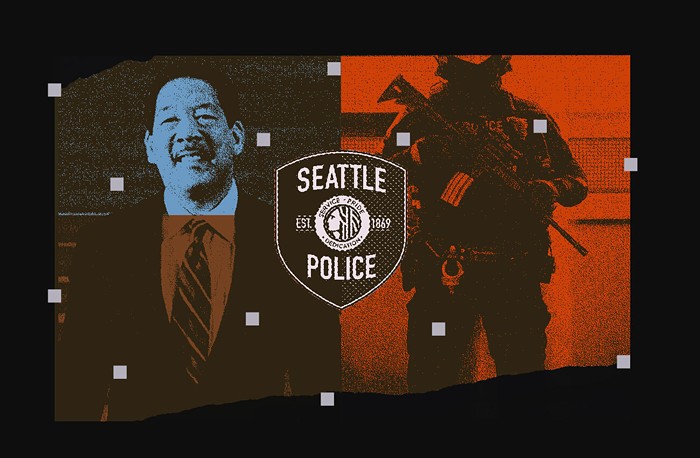
On Thursday, the Sound Transit Board unanimously approved a plan to address the $6.5 billion funding gap in ST3, the expansion of Link light rail service approved by voters in 2016.
Today’s approved plan, which would at the worst delay some stations by up to six years, is a hybrid that offers two alternate approaches — an “Affordable Schedule” based on worst-case funding and cost scenarios and an “Initial Target Schedule” that aims to minimize delays in expansion if future federal and state funding comes to the rescue.
In a surprise move, the board unanimously passed an amendment that would actually accelerate three Seattle infill station timelines, including two stations in Seattle’s South End that had previously faced delay and raised equity issues; NE 130th, Graham St., and Boeing Access Road.

NE 130th’s completion would move up from 2036 to 2025, while the Graham St. and Boeing Access Road in the South End would move up from 2036 to 2031. The agency would accomplish this move with cuts or delays to Sounder commuter rail improvements, parking programs, and a “bus on shoulder” program on I-5.
“The Graham Street neighborhood is a community that has been historically ignored by Sound Transit,” said former state legislator and community member Velma Veloria in public comments during the meeting. “It would be so disappointing if the Graham Street station would be significantly delayed, because our community partners have been waiting for this station for a long time.”
Commenting on the proposed amendment, Seattle Mayor Jenny Durkan noted, “For almost twenty years, the area around Graham St. has been a promised location for light rail... in the meantime we’ve seen huge displacement and gentrification of that neighborhood... It’s a culturally rich part of our city... and it will serve 87% underserved communities, particularly communities of color.”
In an online meeting, the board unanimously passed the overall plan, which represents a compromise between a cost-cutting approach put forward by Sound Transit Chair Kent Keel and a more optimistic outlook offered by King County Councilmember Claudia Balducci that seeks to avoid construction delays.
“We have to plan appropriately; we have to face our challenges with clear eyes,” Balducci, who represents the 6th district on the East Side said during the meeting. “We can’t just assume everything will work out... What I appreciate about this approach is it challenges us to do the best we can to continue to work at delivering these programs with urgency that the timelines require.... It also gives us a fallback that we know we can rely on.”
Sound Transit’s current funding crisis began in April 2020, when the agency reported to the board (which is composed of 18 elected officials from the Puget Sound region and the Washington Secretary of Transportation) that the agency would face a sizable funding gap because of a steep decline in economic activity during the pandemic.
That gap has been revised several times over the past year, including a projected shortfall of $11.5 billion this past February. This April, as the local economy picked up, that budget hole was revised to $7.9 billion, and before the Thursday vote, it was again revised downward to $6.5 billion. Helping decrease the imbalance was $527 million in federal pandemic-related American Rescue Grants, which helped shore up funding for ST2 projects in Federal Way and Lynnwood.
Most of the current gap is now attributed to surging increases in construction costs. Prices are soaring in the region’s booming economy, and in a presentation to the board in April, Sound Transit estimated the agency faced a $595 million increase in projected capital costs, including $64 million for the proposed NE 130th St station, as well as $12 million in higher costs for the Graham St. station and $78 million for the Boeing Access Road station (both in the South End).
Making tough decisions about which stations might be delayed in order to put ST3 back on sound financial footing has been contentious, to say the least.
In an original “realignment” plan put forward by Keel in June of this year, some stations could have faced six-year delays. The proposed Boeing and Graham station delays were especially controversial, as these stations serve communities with relatively high populations of people of color, and a delay of six years raised serious equity issues.
Thursday’s vote comes on the heels of a new poll taken in July by the Northwest Progressive Institute that found 71 percent of likely Seattle voters would prefer finding new funding sources for ST3 rather than accept delays to the expansion.
Board chair Keel has been adamant in pushing for an option that spells out delays in the expansion in order to balance Sound Transit’s books. “We are required by law to have an affordable plan,” Keel told The Stranger, “meaning we can build those projects within those dates. When we have a $6.5 billion shortfall, we can no longer build all of the projects.”
Keel’s affordable option provides the most fiscally conservative scenario, while Balducci’s acknowledges that new, significant federal and state funding could come in, whether it’s from the current $1 trillion federal infrastructure bill, which is lurching toward passage in the Senate this week, as well as future reconciliation bills or loans available from Transportation Infrastructure Finance and Innovation Act (TIFIA).
The board cheered at the completion of the meeting, with several members saying they were heading out for beers to celebrate.
This post has been updated to reflect the fact that Sound Transit did not delay the Smith Cove to Ballard portion of the Ballard Link project to speed up the timeline for the infill stations, as we originally reported.


















